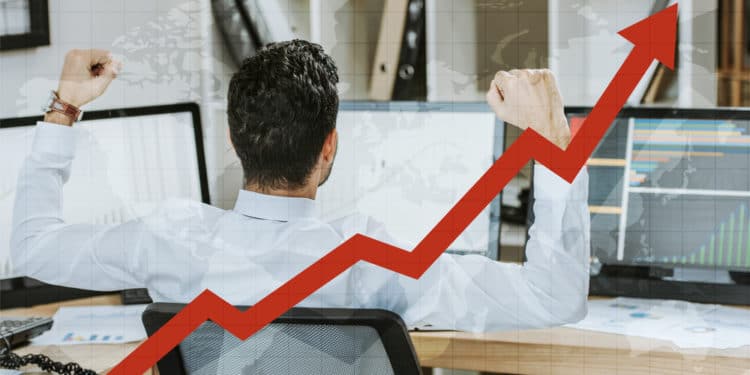What are things to consider when withdrawing profits from your forex trading account? There’s a lot more than meets the eye.
Perhaps, the most exciting and simplest time for any forex trader is performing a profit withdrawal from their broker. Ultimately, every person getting involved in this business does so for this sole purpose.
However, some might not consider the impacts of withdrawing on their future trading. There is an often undiscussed grey area as to exactly when a trader should withdraw and to what extent.
As with anything in forex, there are no hard and fast rules; how each trader perceives this topic will vary drastically. This article will attempt to achieve some considerations most traders should make regarding taking profits out of their trading account.
This question is important, especially as any forex trader wishes for consistent withdrawals while increasingly trading larger positions over time.
Considering the margin requirements when withdrawing
When someone makes any amount of profit, it’s easy to conclude they now have more margin to utilize for future positions. Let’s assume someone has grown their account from $1000 to $1500.
Anyone would generally withdraw some portion of this balance, whether the entire $500 or parts thereof. Although there is some security here, the trader is effectively back to their starting point or not marginally far away from it.
This is one of the challenges of knowing when to withdraw and how much. If we assume this person wanted to trade slightly greater lots going forward, they would need to leave their profit in the account.
The key is defining the point at which the profits should be withdrawn from the broker while leaving enough in the account to meet the margin requirements, have enough to cover their maximum drawdown, and trade bigger sizes.
A trader will want to maintain some form of ‘baseline’ after withdrawing. For instance, a day trader may need to always have at least $5000 to cover all their positions at any one time. Let’s also assume they’ve defined a max drawdown of 15% ($750) based on proper backtesting and data simulation.
They might decide that after reaching $10 000, they could withdraw $2500, leaving them with $7500. As is evident, this baseline balance is a lot more than they started with but now, with having the luxury of trading increased size and real money in their pockets.
Even if their max drawdown would now double to $1500, they would still have $6000.
The frequency of withdrawals is irrelevant
The frequency at which a trader withdraws is irrelevant. Some arguments over traders withdrawing at certain weekly and monthly intervals aren’t necessarily advantageous. Because every trader wants to grow their account consistently and trade increasingly larger positions safely, what matters more is having a defined plan of reaching this goal.
In truth, no trader has the control of deciding when they will have a profitable day, week, or month and how much profit they will gain. So, although basing some time frame seems to make sense, it’s impractical mainly for the previously mentioned reasons.
Defining the proper strategy for growth in a trading plan
How someone decides to scale up to trade bigger positions should be carefully planned out in their trading plan, accounting for the amount of margin consumed by their trades and their maximum drawdown.
Arguably, these are the two most important things. It’s not just the current margin and drawdown to consider but also the future parameters. Once a trader has defined the logical point of taking profits, they would then do some maths on what their account looks like at that point.
Let’s go back to the previous example with $10 000. After having taken out $2500 in profits, the new balance is now $7500. Based on the number of positions a trader takes in a day, week, or month, they need to know the position size for each pair and the monetary value of the risk.
For instance, if they were risking $50 per trade when they had $5000, they would probably now risk $100 per trade. Here, the trader needs to map out how their account could look in the future based on these new figures in terms of their maximum drawdown and when they will withdraw again.
Essentially, it’s all about advanced planning by knowing how to meet the required margin without having a margin call.
Being mindful of how trading accounts differ among brokers with ‘wallets’
Lastly, although all accounts operate in more or less the same way across brokers, there is a slight difference. When withdrawing, some have a separate internal wallet for traders to store their money. With others, the process of removing any funds from the live account automatically qualifies as an actual withdrawal.
This difference, while seeming minuscule, is quite important. When traders can keep their money in some wallet within the broker’s platform, it becomes easier to re-fund the account without depositing from scratch.
Because most traders often prefer to withdraw any amount of profit, this option provides them the flexibility of securing their money without necessarily having to take it out of their broker in case they need to re-fund again.
This may be if they must keep their positions above the necessary margin or unexpectedly had a slightly bigger loss than intended.
When the broker doesn’t have an internal wallet option, traders need to perform a formal withdrawal which might incur unwanted costs. By keeping the account equity unchanged despite the gains, some might fall into the trap of risking more than intended because of not having the wallet choice.
So, a broker with an internal wallet is essential as traders can keep their profits for an indefinite period away from their real account while maintaining the ‘baseline’ balance to maintain the required margin.
It becomes simple to re-fund again if the equity dips back to the point of needing to ‘neutralize’ it again.
Final word
All too often, traders see withdrawals as money to use for their living and luxury expenses. Of course, one is free to do whatever they please with their funds. The point of this article is to highlight the things to consider when withdrawing and how it affects a trader’s account and performance in the future.
Ultimately, every trader wants to increase their lot sizes consistently, similar to how a businessperson uses their existing profits to re-invest in their business. Achieving this objective requires a logical plan of knowing when to withdraw and how much should be in the account for the provision of future trading.







